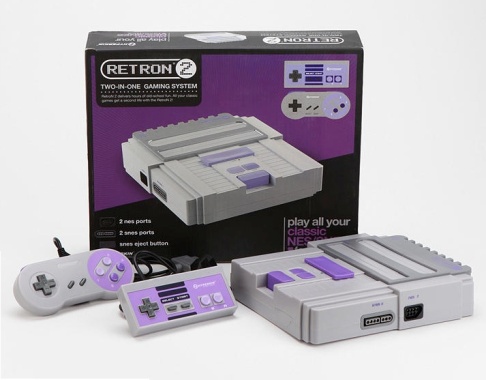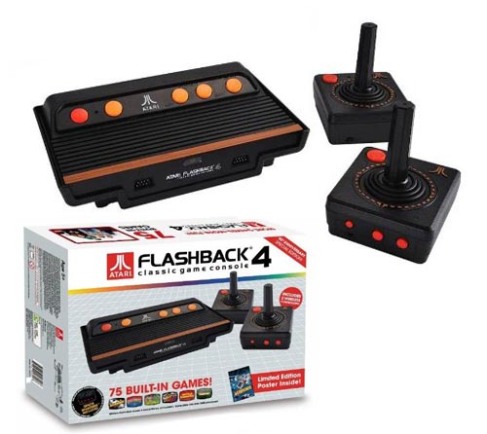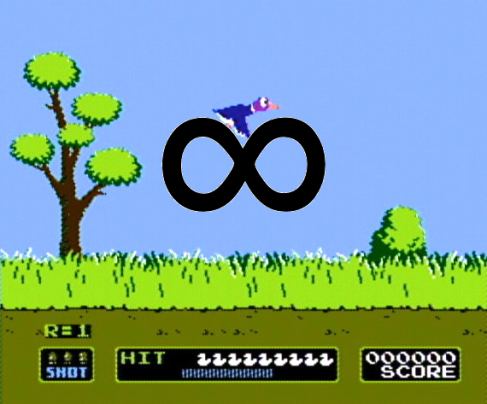I’ve been saying for years that Nintendo should rerelease the original Nintendo Entertainment System. There are plenty of game cartridges floating around, but in my experience, fewer and fewer well-functioning consoles. Well, it’s happened. Sort of.
Shopping yesterday at a trendy store in downtown Toronto (Urban Outfitters), I came across a display of retro-inspired items: books on the history of video games, Teenage Mutant Ninja Turtle pint glasses, and so on. But what really caught my eye was a trio of gaming devices that are new products, but play old games. I surreptitiously took a (blurry) photo of the display so that I could look up these items once I got home.
The first one I picked up to examine was almost the exact device I’ve been predicting. It’s a console that looks like a hybrid of NES and Super NES, and plays both types of cartridges. It comes bundled with one NES and one SNES controller, and is compatible with the decades-old controllers from the original consoles. It’s not manufactured by Nintendo, but rather by some company called Hyperkin. At around $70, the Retron Two-in-One Gaming System seemed like a great buy. I already have reasonably-functional consoles of my own, so I didn’t get one, but I still felt a bit wowed by the fact that this things exists, and is being sold in a store aimed at people in their teen and early 20s.
Next to this retro hybrid beast was a daintier offering: a Sega-branded handheld gaming device, preloaded with 37 Sega Genesis and 3 Capcom games, including heavy hitters like the Sonic the Hedgehog and Street Fighter series. (Also featuring an SD slot for further downloadable games). If the screen hadn’t seemed a bit small (I can’t recall the exact spec), I might have bought this delightful little jewel. I didn’t play a lot of Sega Genesis (other than Sonic games) and would probably enjoy discovering some new old favorites.
The third and last console was the most surprising one: an honest-to-goodness branded Atari, with 75 preloaded games, two wireless old-timey-looking joysticks, and ports for genuinely old joysticks, in case you have some kicking around. (Personally, I have a few that are a whisper away from nonfunctional.) Seriously? I feel like the Venn diagram of the target audience for this item is not very promising.
I mean, let’s be honest here. I’m at the very top of the age range of people who might shop at UO, and I’m too young to have played Atari when it was having its moment in the sun. Who are these potential customers? Maybe young people buying gifts for their parents? Furthermore, I like vintage games as much as the next person, but have you actually played an Atari game in the last decade? (Or two?) It’s fun for about three minutes. I’m all for nostalgia, but when it comes to gaming, I’m also all for fun.
It was certainly interesting to see these items for sale and to consider the implications. I wrote a while back on my vague sadness about the fact that the generation of people exposed to early video games (NES specifically) are playing these games less and less. Maybe the people manufacturing and selling these new-retro consoles know something I don’t… maybe younger people could get into these old games, and save them from disappearing out of collective gamer awareness.
Have you bought or played any of the these new-retro systems?








